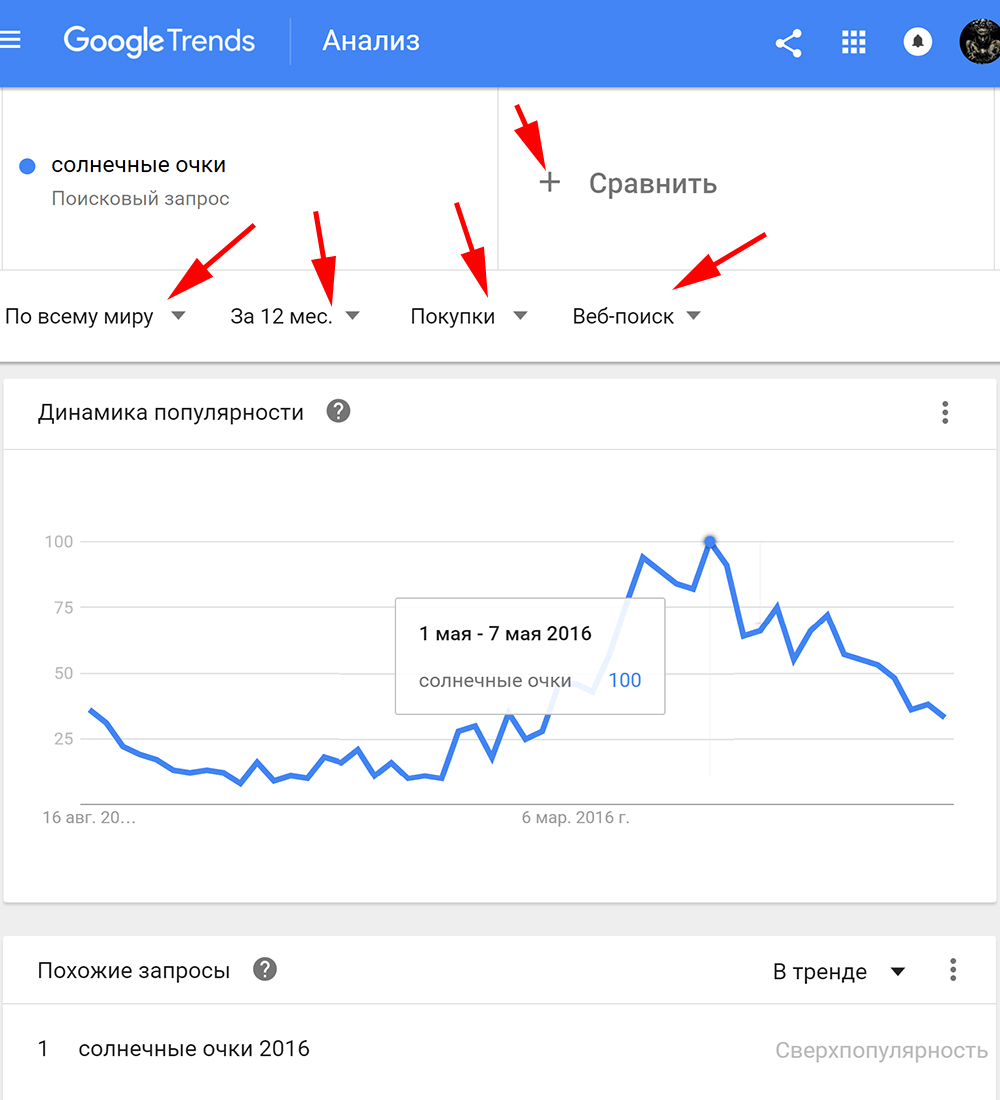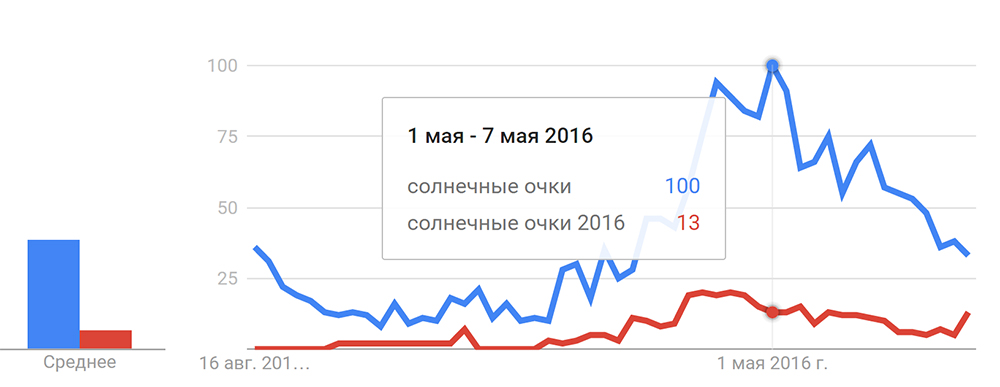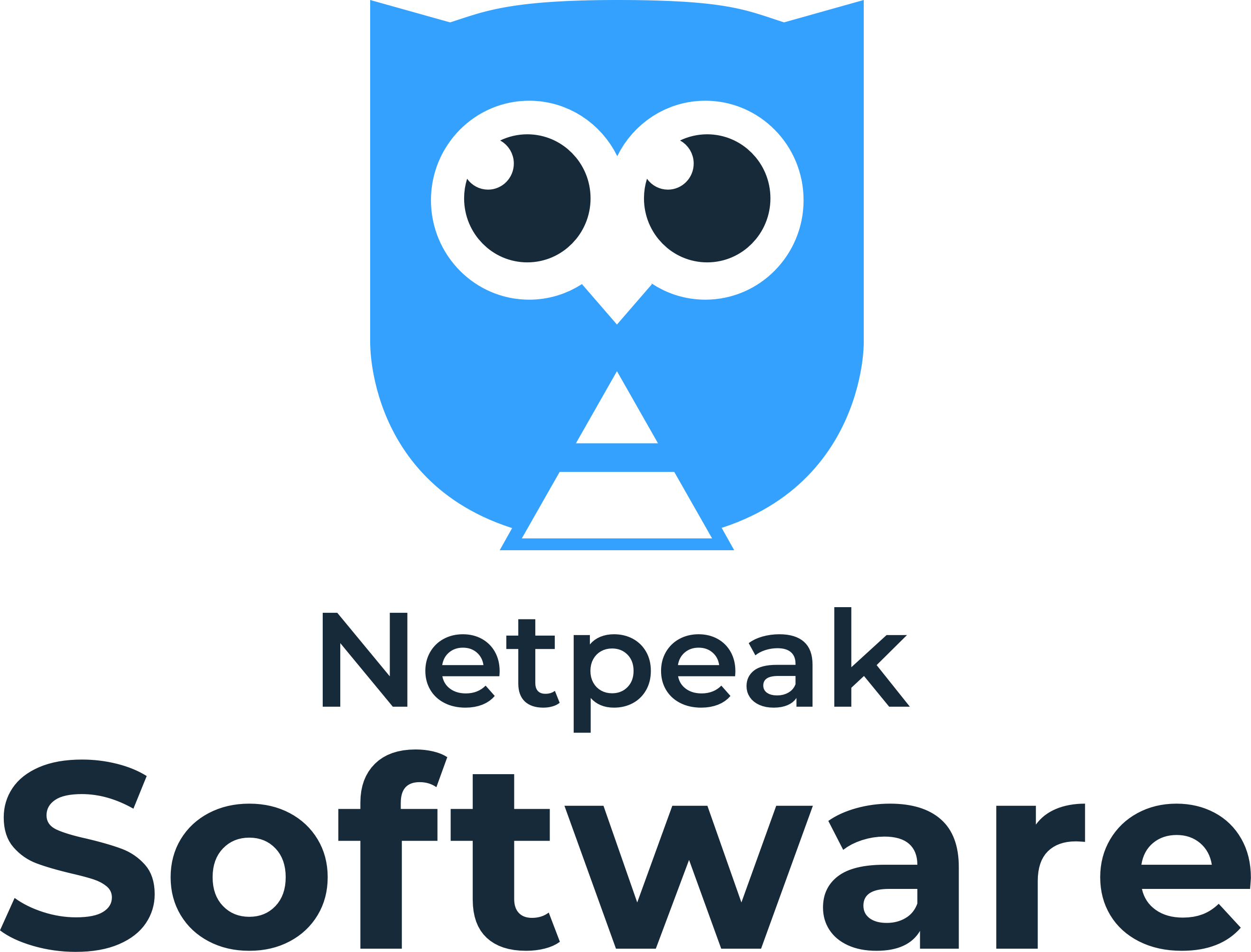
The results of site promotion depend on many factors. For example, from the quality of the collected semantic core. But just collecting keywords is not enough. It is necessary to constantly monitor the popularity of requests and monitor the appearance of new ones. And this always happens, and for various reasons: due to seasonality, world events, "trends" that appear periodically.
How to track the popularity of requests? Via Google Trends. This is a free online tool where you can select and analyze popular requests. The data provided to them is useful for everyone. Especially for webmasters and SEO-optimizers who work with sites that offer seasonal goods or services (winter skis, summer t-shirts, vacations to the sea).
But the main task of Google Trends is to analyze the popularity of queries and topics. It significantly simplifies the promotion of news and other sites that need constant content. After all, you can always find interesting topics for future publications here.
How to work with Google Trends?
The online service from Google has a wide range of functionality, so you will have to understand all its possibilities, features, and nuances. Our guide to working with Google Trends will help make your first acquaintance with it easier:
On the main page there is an offer to familiarize yourself with Google trends, which relate to currently popular news (for example, the World Cup in football, etc.).

Below is a summary of the last day's data. In addition, the region and topic that are taken into account when creating a list of requested news requests are shown. The list can be loaded by clicking the "More" button, thereby collecting the required amount of information.

If you click on any line, examples of news related to this request will appear. And if you click on the request again, a new page will open, showing the graph of popularity dynamics, distribution by region and similar keywords.

Important : If you have a large project, we recommend ordering a reliable VPS server and ensuring stable operation of the site.
How to check the popularity of a query on Google Trends?
If you use Google Trends to search for topics for publications, the points listed above will suffice. But it will not work to plan a promotion strategy for a site that is optimized for seasonal keywords. After all, it is necessary to analyze these requests in a timely manner.
It is easy to check the popularity of a query on Google Trends. To begin, enter any key phrase in the search bar.

Then read the displayed results (they will be the same as in point 3 above). But in this case there are additional functions. For example, you can choose parameters according to which the graph of popularity dynamics will be built. You can specify:
- search region;
- sampling period;
- the category to which the request belongs;
- search type (general, image or video).

Based on the data published by Google Trends, you can track the ups and downs of a key query that is used to promote the site. This is especially true for stores that sell seasonal products. Based on this information, you can understand when you should optimize the page for maximum results. For example, sections with summer products should be ready around May (or April) so that search engines have time to index them and display them in the TOP-10. And when users become massively interested in this group of products, you can count on good sales, as your site will appear among the first in the output.
Also read : How to choose a domain for a website .Google Trends also has a "Compare" function. It allows you to add additional queries and then compare their popularity with the main keyword.

By the way, do not forget that the data in Google Trends is shown in the form of a relative evaluation of requests. The maximum value on the graph is 100%. And all other indicators are calculated based on the ratio with it.
Results
Google Trends popularity analysis is a good way to analyze queries from the semantic core for seasonality and identify peak periods when users search for them most often. If you use this information, you can prepare in advance by performing competent internal optimization of pages before time X. And when it comes - overtake competitors and get a huge number of readers (if it is a news site) or good sales (if it is an online store).
Was the publication informative? Then share it on social networks and join our Telegram channel. We remind you that the hosting company CityHost provides inexpensive hosting services for sites of any complexity. For technical questions, contact us via online chat or by phone ?? 0 800 219 220.








